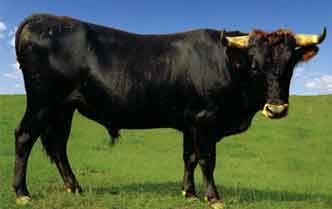Top Eight Tips for Cooking Grass-Fed Beef
Grass-fed beef is absolutely delicious, but there is an art to cooking it right. Read on to learn the top tips for cooking grass fed beef.
Why is grass-fed beef so much better for you?
It's lean - about 3 times leaner than grain-fed beef. It's more nutritious with lots of vitamins that aren't found in grain-fed options. And it's what people ate for thousands of years before we started herding cattle into big, dirty feedlots.
We could go on and on!
Cooking grass-fed beef can be a little trickier than what you're used to. It's leaner and has a bold, earthy flavor that you won't find on a feedlot.
But we're here to help! Here are our top 8 tips for cooking grass-fed beef.

1. Know the Freeze/Thaw Cycle
A strong taste profile is what you get when you buy grass-fed beef. But you can easily lose this with incorrect freezing methods. You want to taste that wonderful beefy flavor, not the inside of your freezer.
Air exposure is the number one reason meats suffer from freezer burn. Always wrap it up tight and vacuum seal if possible.
If you don't have a vacuum seal machine, use freezer paper pressed as tight as possible against the meat. Then put it in a ziplock bag and press all the air out of the bag before freezing.
Always thaw your meat in the refrigerator, never the microwave. The microwave makes thawing uneven, meaning some of your meat is overcooked while some is raw. And microwaving can change the flavor, which you really don't want!
Give it about 24 hours for a 1lb package. Before you cook the meat, let it sit out for half an hour to come up to room temperature. Meat browns better when it's room temperature versus cold.
2. Start Small with Seasoning
Remember, one of the huge benefits of grass-fed is that it tastes so good. So you want to start small when it comes to seasoning. A little salt and pepper might be all you need to serve up a delicious grass-fed steak.
Marinades are okay, as long as they don't overpower the flavor of the meat. And they work best when they add moisture content since grass-fed is leaner than grain-fed. Try adding chopped onions and peppers to your grass-fed burgers to add flavor and moisture.
3. Be Aware of Fat Content
Grass-fed cattle are free-ranging. Meaning they move around a lot more than cattle that stand around in feedlots their whole lives. So the meat is much leaner on a grass-fed cow.
Add some high-quality fat when you cook. Sear the outside of the meat in a top-of-the-line olive oil for a nice, brown crust and some added flavor. Or drizzle with olive oil before you put it into the oven or slow cooker.
And when your steak is done, dollop it with grass-fed butter melted over the top. Yum!
4. Pink is Good
If you're a "well-done" kind of person, it's time to move on. Because grass-fed beef is lean, it doesn't take well to well-done. Cook grass-fed steaks to medium... max!
You might want hamburgers closer to well done than steaks. If so, use a marinade or mix the meat with some moist vegetables.
Then baste your burgers in butter as you cook them. This keeps them moist and lets you cook them longer.
And if you absolutely must have your meat well-done, try the slow cooker. Low and slow helps keep moisture in. And it makes the meat more tender to cook it at a low temperature.
5. Watch Your Cooking Time & Temps
It's important when cooking grass-fed beef that you pay attention to cooking time and temperature. Why? Because it's easy to overcook it.
Every oven and stovetop is different. So it may take you a few rounds to get the hang of how your equipment cooks grass-fed meat. But for the most part, it'll shave about 1/3 the cook time off of grain-fed beef.
Although it's important not to cook it too long, you do want the pan super hot when you're searing meat. Just make sure you don't leave it unattended at high heat to avoid dry meat.
Also, remember that the meat continues to cook for a few minutes after you take it off of the stove or grill. Use a thermometer to test the interior temperature. You want the interior temperature between 130-140 degrees for medium-rare.
6. Give It a Rest
Did we mention that grass-fed beef is leaner? That means it dries out easier than fattier meat. Let it rest for at least 10 minutes after you take it out of the heat.
This rest period allows it to finish cooking. And it keeps the juices locked away inside the meat instead of running all over your cutting board.
Also, don't poke the meat with a fork to pull it out of the oven or grill pan. Use tongs to keep the juices inside.
7. When In Doubt, Tenderize
There are lots of great ways to tenderize meat. And any of them would work well with grass-fed beef.
Apply a marinade that contains a meat tenderizer or an acidic juice like lemon juice. Use an injector or special tenderizer utensil to push the juice into the inside of the meat. This helps break down the tissues before you cook it.
Or you can tenderize meat by putting it into a plastic bag and pounding it with a meat mallet. Better yet, salt the meat before you put it into the plastic bag. Salt creates a mini-brine to further tenderize it.
Also, cut the meat the right way, against the grain. This breaks up the stringy bits of muscle that make up the cut. It'll be much easier to chew if it's cut against the grain.
8. Cooking Grass-Fed Beef the Right Way
Yes, there's a right way and a wrong way of cooking grass-fed beef. The most important thing to remember is not to overdo it. Because of its low fat content, it can easily turn out dry and chewy.
To maximize the flavor of your meat, freeze it and thaw it the right way. Don't over season it either. You want to rich, earthy flavor to shine through.
Add fat to it by cooking with olive oil or grass-fed butter. Stop cooking before it reaches the right temperature so it doesn't get too hot. And let it rest without poking it for at least 10 minutes to keep the natural juices inside.
Are you ready to buy some of our delicious, Criollo grass-fed beef? You won't regret it! Check out our amazing selection right here.








